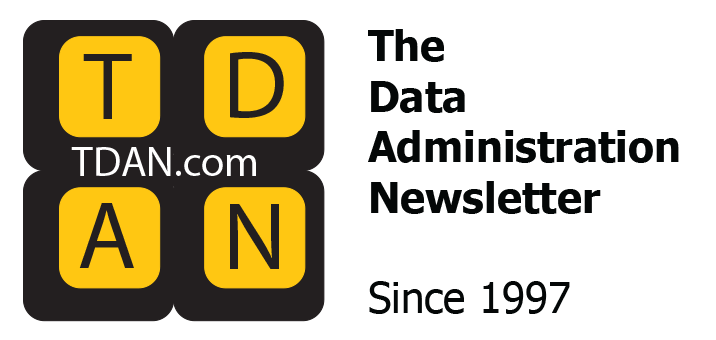
Data governance is a framework of rules, processes, and practices that ensure the effective management and utilization of an organization’s data assets. It guarantees that data is free from errors and inconsistencies and contains all necessary information. In addition to defining standards for data accuracy, completeness, consistency, and timeliness, data governance outlines processes for data cleansing, validation, and enrichment. It also provides a method for how the organization collects, uses, and protects personal data.
Data governance confirms compliance with privacy regulations like the General Data Protection Regulation (GDPR) and California Consumer Privacy Act (CCPA) and categorizes data based on sensitivity and value to the organization. This process helps determine appropriate security measures and access controls. With data governance in place, employees can be trained and supported to take corrective action as needed, assess the current state of their data quality and security, and regularly monitor compliance with data governance policies.
Core Principles of Data Governance
There are six data governance principles:
- Principle 1 — Data Quality. Data quality is the first principle of effective data governance. It ensures that the right data gets to the right role at the right time. The coordination of defining, monitoring, and maintaining data integrity focuses on data accuracy, completeness, and consistency. Data quality supports data integration efforts. If data is consistent, complete, and accurate, any data cleansing or manipulation required for a business process can be approached methodically and reliably. Once the data quality is supported and data integrity is well defined, how the organization collects and uses data can be checked and the data quality validated.
- Principle 2 — Integrity. Data integrity is the second integral principle of data governance and the throughline of data practices — it is the “trustworthiness” of data across its life cycle. Data integrity can be stated simply as data that is accurate when shared and that has not been altered or destroyed without authorization. The range of values for data may change with context, but the unifying principle of data integrity is that the data delivered is precise and sensible for that record and data classification. Data with high integrity and quality has very low or no risk of errors and delivers value for the business. Information and data governance professionals require a high-level map of these requirements and processes to implement monitoring, oversight, audit, and leadership practices, guaranteeing that principles are maintained throughout governance policies.
- Principle 3 — Timeliness. The timeliness principle is that data is delivered as quickly as necessary to retain the value of that data. If data is delivered too early or too late from the requisite task or access request, then the data loses value or becomes a liability.
- Principle 4 — Rules. Data governance rules frame and shape governance efforts by providing boundaries or guidelines for monitoring and processes. A rule is a condition or constraint for policy implementation, access protocols, change management, decision procedures, or testing. Data governance rules help confine and target governance efforts toward defined aims.
- Principle 5 — Roles. Role definition assigns responsibility for specific governance procedures to specific roles. This clear definition of responsibility enables accountability for control frameworks and monitoring processes. Role definition in data governance enables organizations to scope data access and map how an organization uses its data.
- Principle 6 — Security. Data governance and data security go hand in hand and derive benefit from mutual support of leadership and in practice due to the overlap of monitoring and assurance tasks. Data security ensures that the right person sees the right data at the right time. Zero trust architecture follows the “never trust, always verify” approach and benefits from strong data governance. If the principles of data integrity and data quality are mapped to roles and rules of business processes in an organization, then data security has a clear inventory to work from and report on. Deviation from established processes and roles provides an analytic record and a basis for automation in intrusion detection and incident response, including recent advances in predictive analytics to anticipate significant breaches.
Roles and Responsibilities in Data Governance
Data governance is not just one team’s responsibility. Each team is accountable for the data flow and access. They confirm that only the needed data is shared and only shared when required. Teams best know and understand their processes and what is necessary for them. Data governance enables teams to leverage their tacit knowledge to effectively monitor, validate, and update rules and procedures. This follows a principle of distributed responsibility — no one can have eyes on everything, but team members have eyes on their areas. Without governance structures in place, changes to compliance and processes are slow to integrate, data integrity suffers, and risk and losses increase as security breaches become likely. Distribution of responsibility coordinates governance efforts across teams.
Data governance leadership elevates distributed responsibility into an informed business strategy. Leadership can utilize monitoring and control policies integrated into business processes to support responsibility, empower roles, and impact data quality outcomes. When leadership sees at a high level what is happening, what is being built, which tools are effective, and where the pain points are, executives can then enable swift, cost-effective solutions. With continual changes to regulatory and compliance requirements of modern enterprises, data governance responsibilities offer a balanced strategy for coordinating teams. Monitoring and audit practices can communicate these changes to coordinate updates for reporting and training.
Implementation
Companies can apply five best practices to implement successful data governance.
- Understand the business and business processes. Understanding an organization’s business processes, idiosyncrasies, and rules is crucial for effective governance. The rules required for good data governance, the metrics needed for validating data, and the frequency of monitoring all change depending on the industry vertical, scope, and scale of operations. Scope and business process definition enables goal definition and yields an understanding of the current state. This approach provides a map of operations from which the value and benefits of governance can be argued for, a program drafted, and executive sponsorship for the program secured — ensuring ownership and accountability.
- Data classification. Classification of data enables the identification of sensitive data and protects data. It is crucial for business processes to understand what can and cannot be shared to uphold data integrity and quality. The classification policies are taxonomies of data and the formal criteria for how classified data is extracted from assets. Defining the type of data allows for higher specificity for how that data is to be handled. For example, payment card information (PCI) and healthcare records (EHR) require different values to be redacted or shared in varying circumstances and for dissimilar tasks. The labeling lets validation flags for specific data types be layered into validation and testing procedures to ensure data integrity and quality. Data classifications are one of the data governance tools used to understand business process needs and guide monitoring, validation, and reporting to ensure compliance and mitigate risk.
- Consistency. Consistency stems from well-defined processes and monitoring protocols. Responsibility and leadership drive the steady implementation of governance policy. Through well-defined roles, data stewardship, data sponsorship, and executive leadership, the implementation and monitoring of data governance policy has clear accountability for governance program outcomes.
- Testing and validation. Testing and validation combine with data integrity and data quality principles. In addition, incorporating business process mapping, data classification, and data consistency practices, form the standards for rules-based testing. This includes range, formatting, consistency, and business rules. Validation criteria ensure that policy and procedures are monitored and audited for assurance. Testing and validation form a monitoring process and feedback point from which insights and internal data are generated, leading to valuable key performance metrics and optimization data.
- Training. With the continual and iterative core of data governance as an ongoing practice, training is an opportunity for organizations to maintain cohesion in organizational habits, communication, and compliance practices. Data governance integrated with transparent regular training enables the development of shared language, expectations, responsibilities, and procedures. Training is a theme from which data governance becomes an integral habit of the organization rather than just another program.
The Future of Data Governance in Organizations
The reach and impact of data governance cannot be overstated for today’s digital assets. As governance efforts converge with the need for security, management practices, and privacy compliance, data governance has a unifying and harmonizing function in contemporary operations and business strategy. Data governance practices complement and clarify adjacent disciplines and pave the way for enterprises to take advantage of emergent technologies to secure resilient strategic positions in a shifting digital economy. These frameworks inform, monitor, and validate internal processes while enriching and expanding the return on data investments. With emerging legal and compliance approaches adopting data governance as a common language, keeping pace with developments begins with the integration of core principles that can become essential habits. This gives companies the confidence in data assets needed to navigate the unknown through data-driven cultures.
